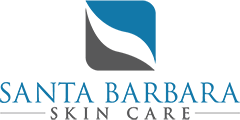Mohs micrographic surgery is a specialized, highly effective technique for the removal of skin cancer. The procedure was developed in the 1930s by Dr. Frederic Mohs at the University of Wisconsin and is now practiced throughout the world.
The Mohs procedure involves surgically removing skin cancer layer by layer, and examining the tissue under a microscope until healthy, cancer-free tissue around the tumor is reached (called clear margins). The procedure is performed specifically for large cancers where standard surgery has failed in complete clearance of the tumor. Mohs surgery will be performed in our office and can sometimes take up to three or four hours to complete. This allows us to eliminate the cancer accurately by targeting two parts in the removal of skin cancer. The two parts being: clearing the cancerous tumor and then proceeding to close the wound. We are able to perform both parts of the procedure on the same day to make it much more convenient for the patients.
Mohs surgery has the highest success rate for the treatment of skin cancer (up to 99%) because our Mohs surgeon is specially trained as a cancer surgeon, pathologist, and reconstructive surgeon.

